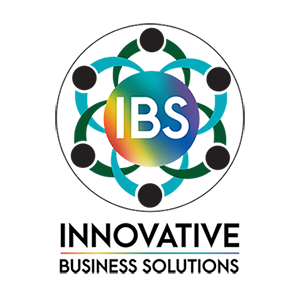Treaty 8
Treaty 8 was one of the few historical treaties signed with First Nations in BC during the 19th and early 20th centuries. The treaty, which was originally negotiated with Alberta First Nations, was extended to cover part of north eastern BC in 1899. Eight Bands in BC have adhered to the treaty: Blueberry River, Doig River, Fort Nelson, Halfway River, Prophet River, Saulteau, West Moberley Lake, and McLeod Lake (which adhered in March 2000).
Information Source: https://www.aadnc-aandc.gc.ca/eng/1100100021848/1100100021849
Treaty 11
Treaty 11, the last of the Numbered Treaties, was an agreement established between 1921 and 1922 between King George V and various First Nation band governments in what is today the Northwest Territories. It outlined the exchange of land ownership rights for monetary value, various amenities and hunting rights.
Information Source: https://dehcho.org/government/about-us/treaty-11/
Section 35 of the Constitution Act, 1982
Section 35 of the Constitution Act, 1982, provides constitutional protection to the indigenous and treaty rights of indigenous peoples in Canada. The section, while within the Constitution of Canada, falls outside the Canadian Charter of Rights and Freedoms. The section does not define the term “aboriginal rights” or provide a closed list; some examples of the rights that section 35 has been found to protect are fishing, logging, hunting, the right to land (cf. aboriginal title) and the right to enforcement of treaties.
Information Source: https://www.sectionthirtyfive.com/
Indigenous and Northern Affairs Canada
Crown-Indigenous Relations Canada (CIRNAC) and Indigenous Services Canada (ISC) provide funding for programs, services and initiatives to First Nations, Inuit and Northern communities, governments and individuals as well as to Aboriginal and Métis organizations.
Indian Act
The Indian Act is a Canadian act of Parliament that concerns registered Indians, their bands, and the system of Indian reserves. First passed in 1876 and still in force with amendments, it is the primary document which defines how the Government of Canada interacts with the 614 First Nation bands in Canada and their members. The Act is very wide-ranging in scope, covering governance, land use, healthcare, education, and more on Indian reserves. Notably, the original Indian Act does two things affecting all indigenous peoples in Canada:
- It says how reserves and bands can operate. The Act sets out rules for governing Indian reserves, defines how bands can be created and spells out the powers of “band councils”. Bands do not have to have reserve lands to operate under the Act.
- It defines who is, and who is not recognized as an “Indian”. The Act defines a number of types of Indian people who are not recognized as “registered” or “status” Indians and who are therefore denied membership in bands.
Policies enacted via the Indian Act
- Gender discrimination
- Bans on religious ceremonies
- Restriction on access to the courts
- Tax exemption
- Residential Schools
Information Source: https://laws-lois.justice.gc.ca/eng/acts/i-5/
Indian Residential Schools Settlement Agreement.
The largest class action settlement in Canadian history to date, the Indian Residential Schools Settlement Agreement (IRSSA) recognized the damage inflicted on Indigenous peoples by residential schools in Canada and established a multi-billion-dollar fund to help former students in their recovery. The IRSSA, which came into effect in September 2007, has five main components:
- The Common Experience Payment
- Independent Assessment Process
- The Truth and Reconciliation Commission
- Commemoration
- Health and Healing Services
Information Source: https://www.rcaanc-cirnac.gc.ca/eng/1100100015576/1571581687074
Treaty Annuity Payments
Every year the Government of Canada makes treaty annuity payments to status Indians who are entitled to them through membership in bands that have signed specific historic treaties with the Crown. Most treaty payments are made in cash during treaty payment events in First Nation communities and urban centers, on or off reserve. They are coordinated by Treaty First Nations and Indigenous Services Canada (ISC) regional offices. The fulfilment of treaty provisions is a legal obligation of the Government of Canada.
Information Source: https://www.sac-isc.gc.ca/eng/1100100032294/1581869772685
Indigenous and Northern Affairs Canada
Crown-Indigenous Relations Canada (CIRNAC) and Indigenous Services Canada (ISC) provide funding for programs, services and initiatives to First Nations, Inuit and Northern communities, governments and individuals as well as to Aboriginal and Métis organizations.
Information Source: https://www.aadnc-aandc.gc.ca/eng/1100100010002/1100100010021
Funding Programs
ISC manages its funding decisions based on the Budget Management Principles founded on the financial management practices for public entities in Canada, and are informed by the Indigenous services context. These principles will serve as the foundation for the ISC Policy on Internal Reallocation of Social, Housing, Education and Health Program Funds. This link is to the funding programs.
Information Source: https://www.aadnc-aandc.gc.ca/eng/1425576051772/1425576078345
A History of Treaty-Maning in Canada
Information Source: A History of Treaty-Maning in Canada


